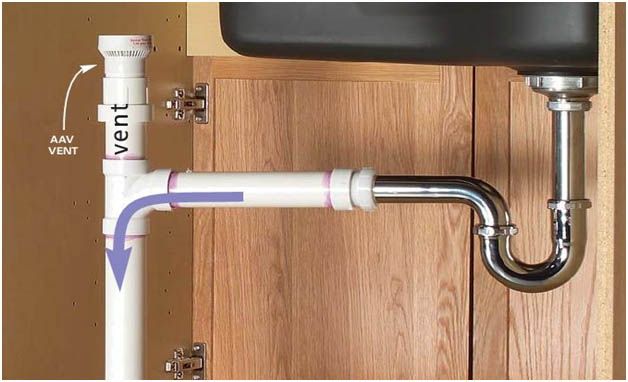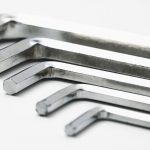When discussing installing faucets, sinks, and any plumbing fixture, you must comply to avoid adverse effects.
You need to pay attention to venting for a kitchen sink installation. What is a vent? Does a kitchen sink need a vent? What if you do not vent your sink?
Today, we will help you answer these questions. So keep reading to see more!

Does A Kitchen Sink Need A Vent?
The answer is Yes. All kitchen sinks need a vent to prevent clogging while promoting the free flow of liquids, including water, from the sink.
Venting your kitchen sink allows the air to get in behind the water flowing out. It will prevent fats, oils, and debris from clinging to the wall of your drain.
As a general rule, we recommend attempting to vent your sink through the attic or roof. It will allow the cases to rise over and away from the kitchen.
When you vent your kitchen sink out of your roof or attic, ensure the exit of your vent remains six inches or more above the roofline.
If not, there is a possibility of gas seeping back into the house through openings.
Related: What To Do When The Kitchen Sink Is Clogged
What is a kitchen sink vent and what does it do?
A kitchen sink vent, also known as a vent stack or plumbing vent, is an essential component of a plumbing system. Its primary function is to provide proper ventilation and prevent the buildup of harmful gases in the plumbing system, specifically in the drain pipes connected to the kitchen sink.
The kitchen sink vent is connected to the drainpipe or waste pipe of the kitchen sink and extends through the roof of the building. It consists of a vertical pipe that allows air to flow in and out of the plumbing system. The vent pipe is typically separate from the main drain pipe and runs parallel to it.
So, what does a kitchen sink vent do? Here are its main purposes:
- Equalizes air pressure: When water flows down the drain, it creates a vacuum effect that can slow down the drainage process. The kitchen sink vent provides a way for air to enter the system, equalizing the pressure and allowing the water to flow smoothly. It prevents gurgling sounds, slow drainage, or potential backups.
- Eliminates sewer gases: The vent pipe ensures that sewer gases, such as hydrogen sulfide and methane, are safely expelled from the plumbing system. These gases can be harmful and even toxic if trapped within the pipes and released into the living space. The vent allows these gases to escape through the roof, keeping the indoor environment safe and odor-free.
- Prevents siphoning: The kitchen sink vent also acts as a barrier against siphoning. When water flows rapidly down a drain, it can create a vacuum effect that may siphon water from nearby fixture traps, like in the P-trap under the sink. The vent equalizes the pressure and prevents this siphoning action, ensuring that water remains in the traps, effectively blocking sewer gases from entering the building.
What if You Do Not Vent Your Sink?
If you do not vent your sink, you cannot expect it to drain correctly.
It can allow sewer gasses to get into your house and prevent dirty water, human waste, and other byproducts from being released from the pipes.
In summary, if your sink has no vent, there will be no natural pressure to push water and waste down the drain system.
Signs Of No Or Poor Ventilation
The lack of ventilation for your kitchen sink may not sound like a big deal, but it will expose you to exhaust fumes. In the long run, this can cause illness.
Therefore, if you notice any of the signs on the list below, call your trusted plumber as soon as possible.
Bubbles In The Toilet Bowl
Many people think that there is no big deal with bubbles. Unfortunately, they are indicative of more severe problems.
If your kitchen sink lacks a vent, it should attempt to find air from other areas. In this case, bubbles will appear in some areas like your toilet.
Foul Odor From Drains
The lack of a vent will prevent sewer gasses from remaining trapped within your pipe system. As a result, you will soon notice a foul odor from sink drains.
The Toilet Bowl Is Empty
Your toilet bowl always refills with water after each flush.
So if one day you notice that the toilet bowl has minimal water remaining or is empty upon flushing, it could indicate improper ventilation. The cause could be a lack of pressure.
Slow Drainage
Slow drainage can also be a side effect of your sink’s lack of a vent.
If you are sure there is no blockage and have taken all necessary measures to improve your drainage, but slow drainage continues, it is time to consider venting your sink.
Gurgling Sounds
Gurgling and bubbling should not be the usual things for your system drain. If your bathtubs and sinks emit these noises, restricted airflow could be the cause.
It can make it challenging for water and waste to travel through your pipes.
Consequences of Inhaling Sewer Gas
Sewer gasses are created from non-toxic and toxic fumes. If your kitchen sink lacks a vent, it can have serious consequences for you and your family members.
Asphyxiation
When sewer gas gets in the air in your home, it will begin to take the place of oxygen in the air. When oxygen reduces, it will cause nausea, headaches, dizziness, and suffocation.
Hydrogen Sulfide Poisoning
Both hydrogen sulfide and methane, the main elements of sewer gas, would be highly explosive and flammable. Even a tiny amount of these gasses can cause an explosion or a fire in your home.
Fire And Explosion
Hydrogen sulfide is explosive. Also, it is highly toxic.
Minimal amounts of hydrogen sulfide are enough to cause eye irritation or damage, nausea, dizziness, headache, nervousness, and drowsiness.
More significant amounts of hydrogen sulfide can lead to pulmonary edema or even sudden death.
The Bottom Line
To summarize, your kitchen sink always needs a vent to drain correctly.
Otherwise, it can lead to many unwanted incidents which affect your daily life. Hopefully, you found this article useful. If so, please share it.




